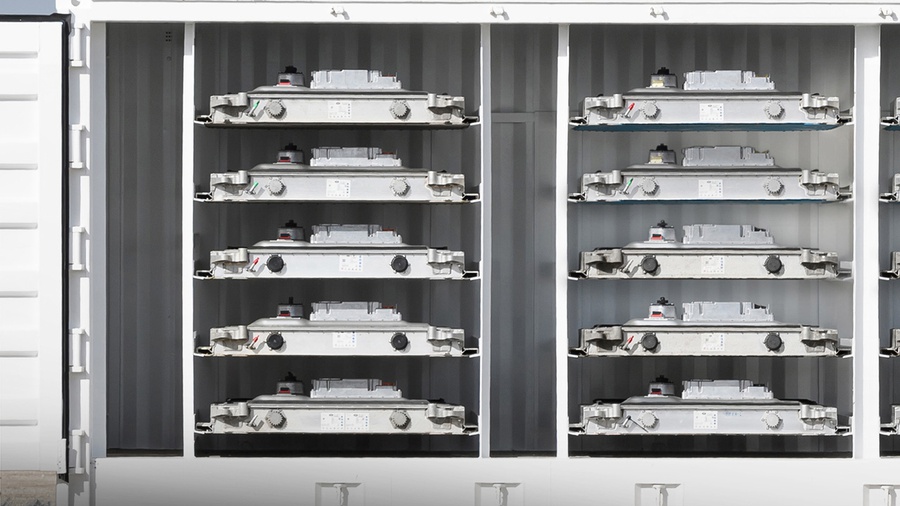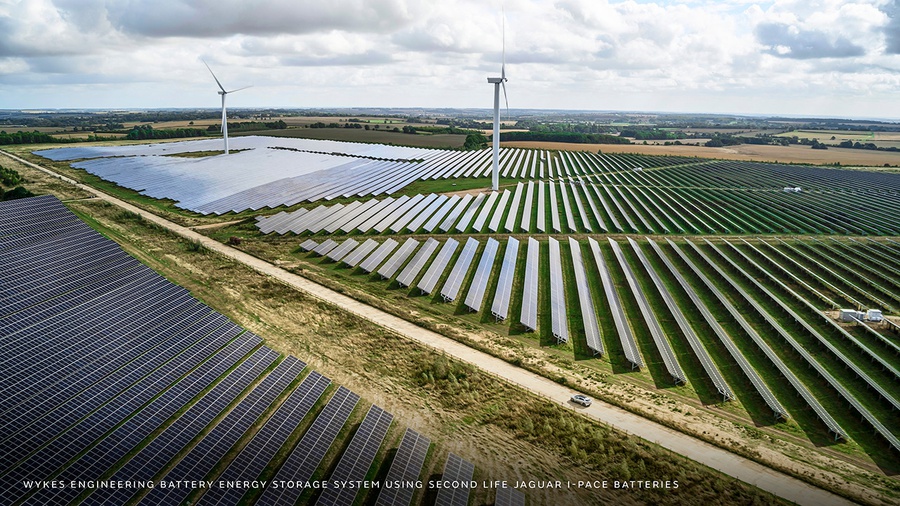A single Battery Energy Storage System (BESS) from Wykes Engineering employs 30 repurposed I-Pace batteries and has a full capacity to store up to 2.5MWh of energy. These batteries are sourced from prototype and engineering test vehicles. By the close of 2023, JLR plans to provide enough batteries to amass a total of 7.5MWh of energy, sufficient to supply 750 households for a day. Additional storage units can be assembled in the future to accommodate more second-life batteries extracted from decommissioned production vehicles.
Each BESS is equipped with a sophisticated inverter to optimize efficiency and handle energy distribution. These systems can both supply power to the National Grid during high-demand periods and draw power from it during low-demand times for future utilization.
As per JLR’s statement, such battery storage setups are essential for making the Grid more sustainable. They can manage sudden spikes in power demand and optimize the use of solar and wind energy during favorable weather conditions.
Notably, the integration between Wykes Engineering and JLR has been streamlined, requiring no extra manufacturing processes or battery module removal. Batteries are directly transferred from the Jaguar I-Pace vehicles to on-site storage racks, enhancing the project's sustainability.
"One of the major benefits of the system we’ve developed is that the containers are connected to the Grid in such a way that they can absorb solar energy ,that could otherwise be lost when the grid reaches capacity. This excess energy can now be stored in the second life I-PACE batteries and discharged later .This allows us to ‘overplant’ the solar park and maximise the amount of power we generate for the area of land we are using." said David Wykes, chief executive officer of wykes engineering.
By 2030, the demand for second-life batteries for stationary applications like renewable energy storage could surpass 200 gigawatt-hours annually, amounting to a global market value exceeding $30 billion. Once the health of JLR’s batteries falls beneath the strict criteria set for electric vehicles—usually around 70-80% residual capacity—they can be repurposed for low-energy applications.
JLR will introduce new circular economy ventures in the energy storage sector and beyond by reutilizing vehicle batteries. When the batteries no longer meet the specifications for these second-life applications, they will be recycled, allowing raw materials to be reclaimed and reused, thereby establishing a genuine circular economy.
Source: JLR



